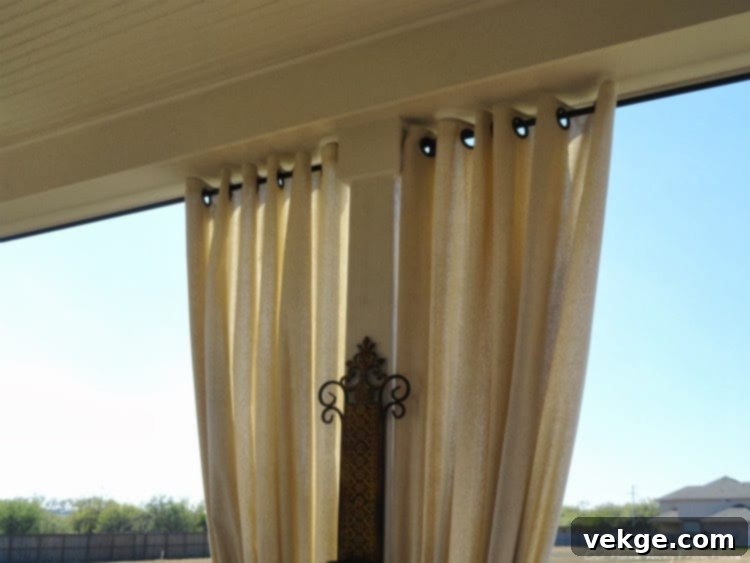DIY Drop Cloth Curtains: Create Stunning, Budget-Friendly Window Treatments
Ready-made curtains often come with a hefty price tag, easily costing hundreds of dollars, and finding the perfect size can feel like an impossible quest. Many homeowners face the frustration of endlessly measuring windows and comparing prices, only to settle for less-than-ideal options.
The good news is that you can create beautiful, custom-sized curtains using inexpensive drop cloths. These DIY curtains can look just as sophisticated and appealing as their store-bought counterparts, but at a mere fraction of the cost. This guide will reveal the simple process of transforming humble drop cloths into elegant window treatments for your home.
In this comprehensive guide, we’ll walk you through every step of creating your own drop cloth curtains. You’ll learn essential techniques, from accurately measuring your windows and preparing the fabric, to adding hardware and hanging your curtains perfectly. We’ll also share insider tips and tricks to help you achieve professional-looking results that will impress any guest.
What Exactly Are Drop Cloths?
Traditionally, drop cloths are large pieces of fabric used by painters to protect floors and furniture from paint spills. However, their utility extends far beyond protective covers. With their durable material and often neutral color, drop cloths have become a popular and versatile choice for a variety of home decor projects, especially for crafting unique and affordable curtains.
You’ll typically find two main types of drop cloths, each offering distinct characteristics suitable for different curtain needs:
1. Cotton Drop Cloths
Cotton drop cloths are a light to medium-weight option, making them ideal for most windows. They possess a soft texture that, after washing, closely mimics the feel and drape of many store-bought curtains. These are perfect for spaces where you desire a gentle diffusion of light and a relaxed, airy aesthetic. They wash and iron with ease, naturally forming stylish folds that add a touch of elegance to any room.
2. Canvas Drop Cloths
Canvas drop cloths provide a sturdier, more substantial fabric choice, particularly well-suited for larger windows or areas where greater light blockage is desired. After a few washes, the canvas softens considerably while maintaining its robust structure. This makes them highly durable and capable of withstanding daily opening and closing without showing premature wear and tear.
Why Drop Cloths Are an Excellent Choice for Curtains
Opting for drop cloths when making curtains offers a myriad of advantages, making them a favorite among DIY enthusiasts:
- Cost-Effective: They are significantly less expensive than purchasing traditional curtain fabric or ready-made panels, allowing you to achieve a high-end look on a budget.
- Versatile Aesthetics: The natural, neutral color of drop cloths seamlessly complements virtually any room style, from farmhouse chic to modern minimalist.
- Pre-Hemmed Edges: Many drop cloths come with finished hems on all sides, saving you the time and effort of extensive sewing.
- Generous Sizing: Available in large dimensions, drop cloths are perfect for tall windows or creating expansive curtain panels without needing to piece multiple fabrics together.
- Effective Light Control: The material naturally blocks a good amount of light, with canvas offering more opacity than cotton, providing privacy and shade.
- Easy Maintenance: They are simple to wash and iron, ensuring your curtains remain fresh and crisp with minimal effort.
- Minimal Shrinkage: Most drop cloths are made from a cotton-poly blend, which helps to minimize shrinking after washing, ensuring your custom lengths remain accurate.
- Long-Lasting Durability: With proper care, drop cloth curtains are built to last for years, standing up to sunlight and regular use without significant fading or wear.
Drop Cloth Curtains vs. Traditional Curtains: A Comprehensive Comparison
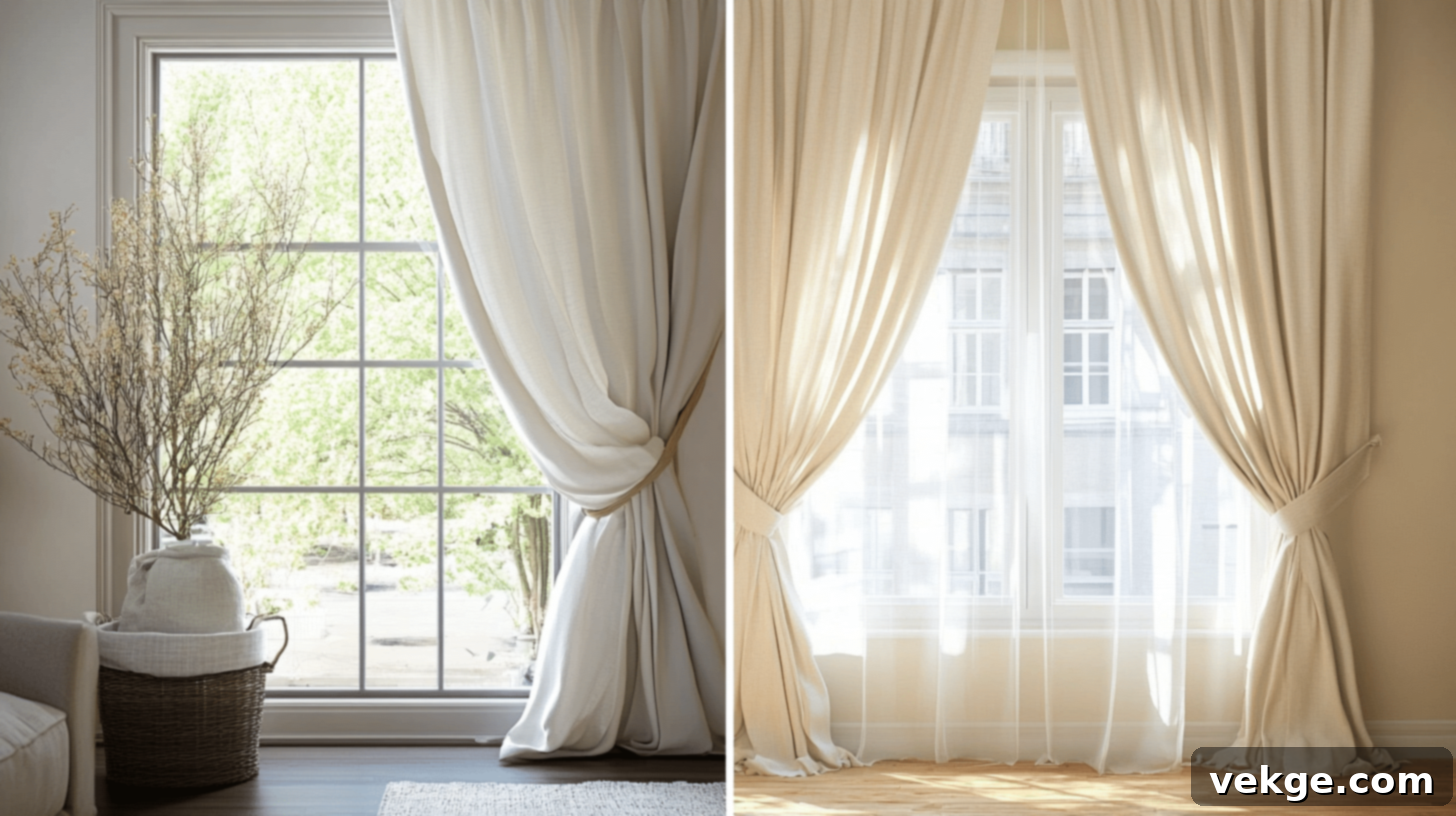
1. Cost Comparison
Traditional store-bought curtain panels can range anywhere from $50 to $200 per panel, quickly escalating costs for multiple windows. In stark contrast, an entire set of living room curtains can be crafted from drop cloths for under $60. A single 6×9 foot drop cloth typically costs around $10-15 and provides enough fabric for two full curtain panels. Furthermore, the pre-hemmed nature of drop cloths eliminates additional hemming expenses, making them an incredibly economical choice.
2. Style Differences
Despite their humble origins, drop cloth curtains can rival the aesthetic appeal of much pricier options. The natural cotton hue offers a sophisticated, understated elegance that harmonizes with a diverse range of interior design styles. When properly washed and ironed, they drape beautifully, creating soft, luxurious folds akin to those seen in premium linen curtains. Many guests are often surprised to learn these aren’t high-end boutique purchases.
3. Durability
Drop cloth curtains are remarkably durable. Many DIY enthusiasts report their drop cloth creations lasting four years or more, maintaining their pristine appearance. The robust fabric holds up exceptionally well to sunlight, resisting fading better than many commercial curtain fabrics. They also tolerate repeated washing cycles without issues. The inherent thickness of the material provides superior resistance to tears and wear compared to numerous thinner, store-bought curtain options.
4. Light Control
These curtains offer commendable light control. Canvas drop cloths, in particular, are effective at blocking out light, making them suitable for bedrooms or media rooms where darkness is desired. Cotton drop cloths, while still offering privacy, tend to filter light more softly, creating a warm, inviting glow. For those seeking complete darkness, drop cloth curtains can easily be paired with a blackout liner, just like any traditional curtain.
5. Maintenance
Caring for drop cloth curtains is remarkably straightforward. They can typically be machine washed in warm water and dried on medium heat. They often exhibit superior wrinkle resistance compared to many retail curtains. While ironing is optional, it can impart a crisp, polished appearance. For minor marks, spot cleaning is effective, and the forgiving neutral fabric tends to conceal dust between washes, simplifying your cleaning routine.
Selecting the Perfect Drop Cloth for Your Curtains
Available Sizes
Drop cloths are manufactured in various standard sizes to accommodate different window dimensions and project needs. Common sizes found in most hardware or home improvement stores include 4×5, 6×9, 8×10, 9×12, and 12×15 feet. For standard 8-foot ceilings, a 6×9 foot drop cloth is often an ideal choice. For taller windows or dramatic floor-to-ceiling treatments, 9×12 feet provides ample fabric. A general rule of thumb for panel width is to multiply your window’s width by 1.5 or 2. This ensures enough fabric to create those desirable, elegant folds when the curtains are closed.
Key Considerations When Purchasing
When selecting drop cloths for your curtain project, focus on these three critical aspects:
- Weave Quality: Examine the fabric for a tight, even weave. A denser weave generally indicates higher quality and will drape more like traditional curtain fabric. Run your hand over the cloth; it should feel relatively smooth, free from noticeable loose threads or irregular bumps.
- Fabric Weight: Test the weight by picking up the cloth and allowing it to fall. It should have enough body to drop straight down without being overly stiff. If the fabric is too light, it may not hang well or provide sufficient light blockage. Conversely, if it’s too heavy and rigid, it might not gather or fold beautifully when opened.
- Texture: Observe the texture. Some drop cloths have a slightly rougher finish that softens significantly after an initial wash. Others may come pre-softened, which saves a step in the preparation process. While both types work well, pre-softened options might require less initial prep. Always inspect for any obvious seams or patches in the middle of the cloth, as these can detract from the finished curtain’s appearance. Aim for seamless pieces for the best results.
Essential Tools and Materials for Making Drop Cloth Curtains
Gathering the right tools and materials is crucial for a smooth and successful DIY curtain project. Below is a list of items you’ll need, especially for a no-sew patio curtain setup as demonstrated in our example:
| Tool/Material | Description |
|---|---|
| Drop Cloths | Large, high-quality, seamless cloths forming the main curtain panels. |
| Metal Curtain Rods | Durable, 10-foot, ½-inch metal rods, ideal for supporting curtains. |
| Metal Saw | Necessary for precisely cutting the metal rods to your desired length. |
| KILZ Spray Primer | A primer essential for creating a smooth, white base on the curtain rods before painting. |
| White Spray Paint | The final coating for the rods, allowing them to match or complement your decor. |
| Ring Clips | Black metal clips designed to attach the drop cloths securely to the rods, facilitating easy movement. |
| Metal Hooks | Sturdy hooks used to support the curtain rods, especially when installing on a patio frame. |
| Screwdriver/Drill | Tools required for firmly securing the support hooks into place. |
| Washing Machine and Iron | Standard household appliances for cleaning, softening, and smoothing the drop cloths prior to assembly. |
Preparing Your Drop Cloths for Curtain Making
1. Washing and Shrinking
Pre-washing your drop cloths is a non-negotiable step that ensures your curtains will look their best and maintain their dimensions. Drop cloths often come treated with sizing chemicals, which can make the fabric stiff and prone to shrinking. Pre-washing removes these stiffeners, making the fabric softer and more pliable, and importantly, it accounts for any potential shrinkage *before* you cut or hem, preventing unwelcome surprises after your curtains are complete.
Step-by-Step Washing Instructions:
- Wash the drop cloths in warm water on a normal cycle.
- Use your regular laundry detergent; no special products are typically needed.
- Add approximately 1/2 cup of white vinegar to the wash to help further soften the fabric.
- Dry on medium heat until the cloths are completely dry.
- If the fabric still feels stiff after the first wash, run it through a second wash cycle.
- Dry again, removing promptly from the dryer to minimize wrinkles.
2. Bleaching and Dyeing Options
For those looking to customize the color of their drop cloth curtains, both lightening and dyeing are viable options:
How to Lighten the Fabric:
- Fill your washing machine with hot water.
- Add 2 cups of liquid bleach to the water.
- Submerge the drop cloths and allow them to soak for approximately 30 minutes.
- Run through a regular wash cycle.
- Repeat the process if a lighter color is desired.
- Always perform an additional wash cycle without bleach to ensure all bleach residue is removed.
Dyeing Techniques:
- Select a fabric dye brand like RIT, following the manufacturer’s instructions.
- Prepare a large tub or bucket with hot water as specified by the dye instructions.
- Add salt to the dye bath; this helps the color adhere more effectively to the fabric.
- Stir the fabric frequently and thoroughly to achieve an even color distribution.
- Wash the dyed cloths separately until the rinse water runs clear, preventing color transfer.
- It’s always recommended to test the dye on a small, inconspicuous piece of the fabric first.
3. Removing Wrinkles and Ironing Tips
To give your drop cloth curtains a crisp, polished appearance, ironing is often beneficial. Follow these tips for the best results:
- Iron the fabric while it is still slightly damp for easier wrinkle removal.
- Use the cotton setting on your iron, along with plenty of steam.
- Work in small sections, moving the iron steadily to prevent scorching.
- Avoid leaving the iron stationary on the fabric for too long.
- Begin by ironing the main panel areas, then move to the edges and hems.
- Hang the curtains immediately after ironing to prevent new wrinkles from forming.
- For quick touch-ups, a fabric wrinkle release spray can be very effective.
DIY No-Sew Drop Cloth Curtains: Step-by-Step Instructions (Patio Example)
This section provides detailed instructions for creating a no-sew drop cloth curtain system, using a patio setup as a practical example. These principles can often be adapted for indoor use with appropriate hardware.
Step 1: Gather and Prepare Materials
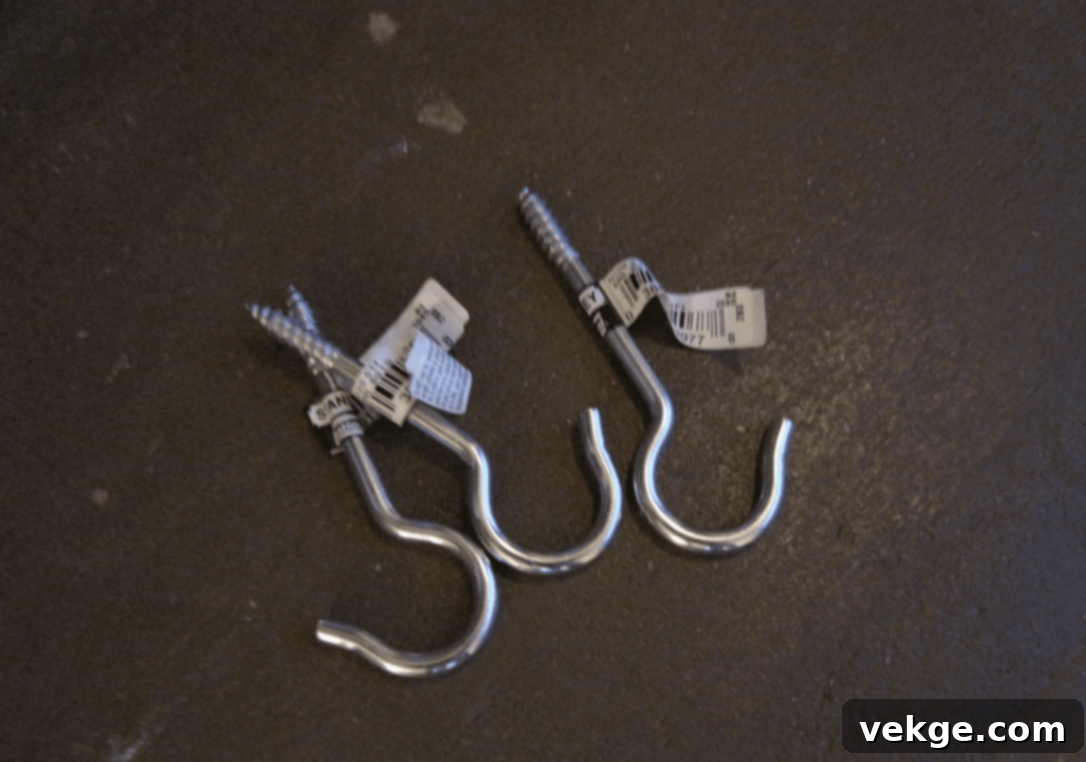
- Purchase five large drop cloths. For best results and a seamless appearance, consider drop cloths from brands like Home Depot, which are known for not having a middle seam.
- Thoroughly wash and iron each drop cloth. This crucial step removes wrinkles, factory coatings that can stiffen the fabric, and pre-shrinks the material, ensuring the curtains hang beautifully and naturally.
Step 2: Set Up Curtain Rods

- Acquire two 10-foot metal poles (½ inch thick), which will serve as your curtain rods.
- Using a metal saw, carefully cut each pole to approximately 7 feet in length, tailoring them to fit each side of your patio area perfectly.
- To achieve a smooth, finished look, first spray the poles with a primer (such as KILZ spray primer), followed by a top coat of white spray paint to match your outdoor decor.
Step 3: Attach Hooks for Rod Support
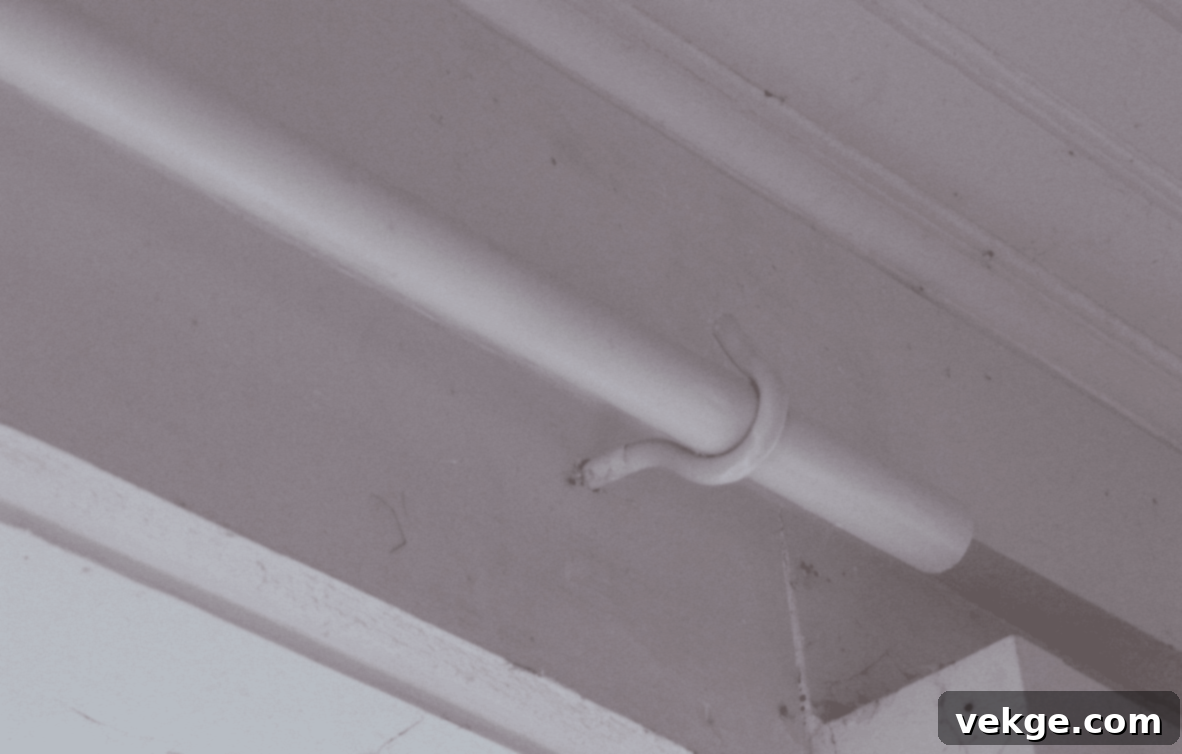
- Install eight sturdy metal hooks that will securely hold your curtain rods. Position these hooks strategically along the top edge of your patio frame, ensuring they are evenly spaced to provide stable and balanced support for the rods and curtains.
- Securely screw the hooks into place. For a cohesive look, spray paint the installed hooks white to blend seamlessly with the patio structure.
Step 4: Assemble the Curtains on the Rods
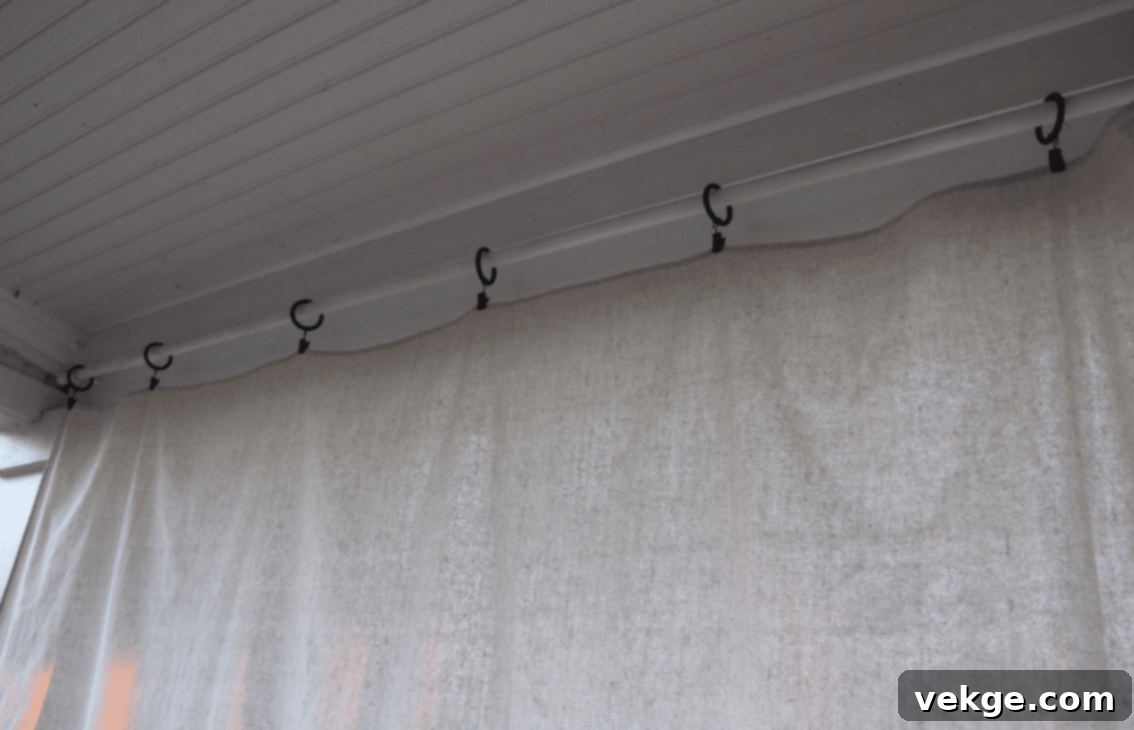
- Attach each prepared drop cloth curtain to its respective rod using black metal ring clips. These clips facilitate smooth opening and closing of the curtains.
- Distribute the clips evenly along the top edge of each drop cloth. This balanced spacing is crucial for creating a neat, uniform appearance and preventing any sagging of the fabric.
Step 5: Install Curtains and Make Final Adjustments
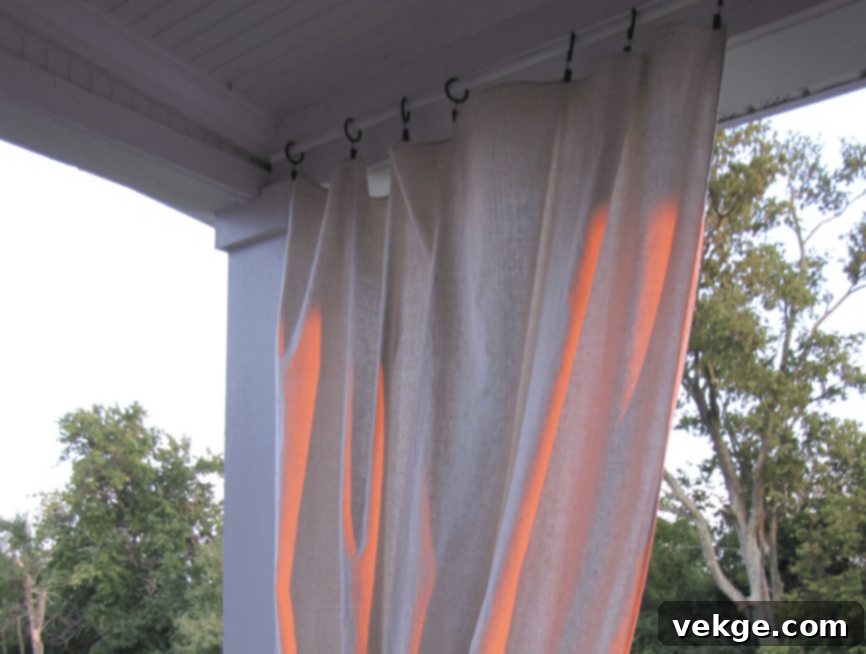
- Carefully place the assembled poles onto the attached hooks. Ensure that each curtain hangs straight and is aligned to your aesthetic preference.
- Make any necessary final adjustments to the curtains, such as tying them back with decorative ties for an open look or spreading them out fully for maximum shade and privacy.
How to Care for Your Drop Cloth Curtains
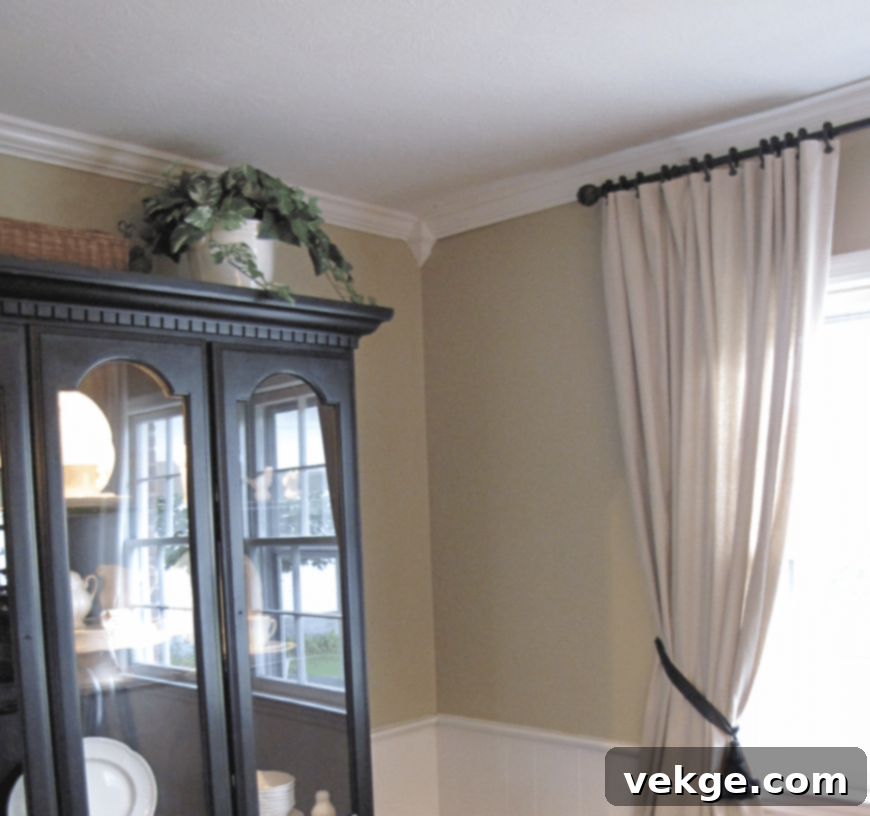
Maintaining the fresh appearance and longevity of your drop cloth curtains is simple with a consistent care routine:
- Regular Washing: Wash your curtains every 3-4 months. Use warm water on a gentle cycle with a mild soap. Avoid fabric softener, as it can sometimes leave a residue on the natural fibers.
- Dust Removal: Weekly, give your curtains a quick shake or use a vacuum cleaner with a soft brush attachment to remove accumulated dust and debris.
- Spot Cleaning: Address spots and spills immediately. First, gently blot the area with plain water. If needed, apply a small amount of mild soap, then rinse thoroughly. Always pat, rather than rub, to avoid damaging the fabric.
- Drying: Dry your curtains on medium heat and remove them promptly from the dryer as soon as they are dry to prevent wrinkles from setting.
- Ironing: For a smooth, crisp finish, iron the curtains on a cotton setting while they are still slightly damp.
- Protection: Keep curtains away from direct contact with heating vents, which can cause fading or damage. If you have pets, ensure they don’t scratch or pull at the fabric.
- Periodic Inspection: Every six months, take a moment to check seams and the overall fabric for any signs of wear. Repairing small tears or loose threads early can prevent them from becoming larger issues.
By following these straightforward steps, your drop cloth curtains will stay fresh, clean, and beautiful for many years to come.
Creative Ways to Style Your Drop Cloth Curtains
Drop cloth curtains offer a fantastic blank canvas for personalization. Here are several styling ideas to enhance their look and integrate them seamlessly into your home decor:
1. Layer with Sheer Curtains for Softness
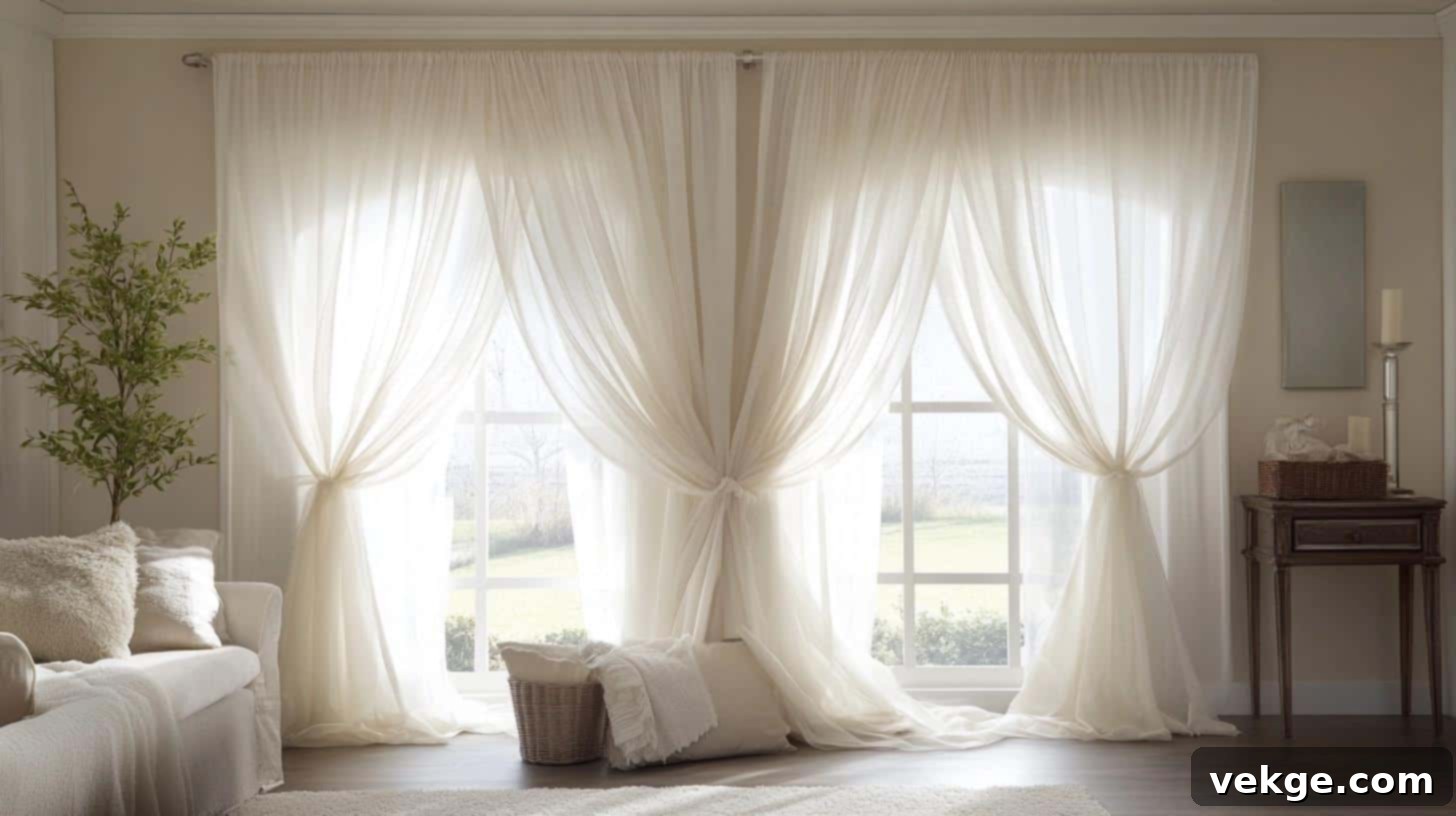
For an elegant and romantic effect, hang a sheer curtain behind your drop cloth panels. The sheer layer introduces additional texture and visual depth, softens incoming light, and enhances the overall sophistication of your window treatment.
- How to Achieve This Look: Utilize a double curtain rod or layered clip rings. Position the sheer curtain closest to the window, with the drop cloth panel in front. Ensure both curtains are of similar length to maintain a harmonious layered appearance.
2. Add Grommets for an Industrial Edge

Installing metal grommets along the top edge of each drop cloth panel and hanging them on a sturdy metal rod imparts a contemporary, industrial style. This look is particularly fitting for urban, loft, or modern minimalist interior designs.
- How to Achieve This Look: Purchase a grommet kit from a craft store. Carefully mark the top edges of each drop cloth for even spacing of the grommets. Follow the kit’s instructions to insert the grommets, then simply slide the curtains onto your metal rod.
3. Create a Boho-Chic Vibe with Tassels
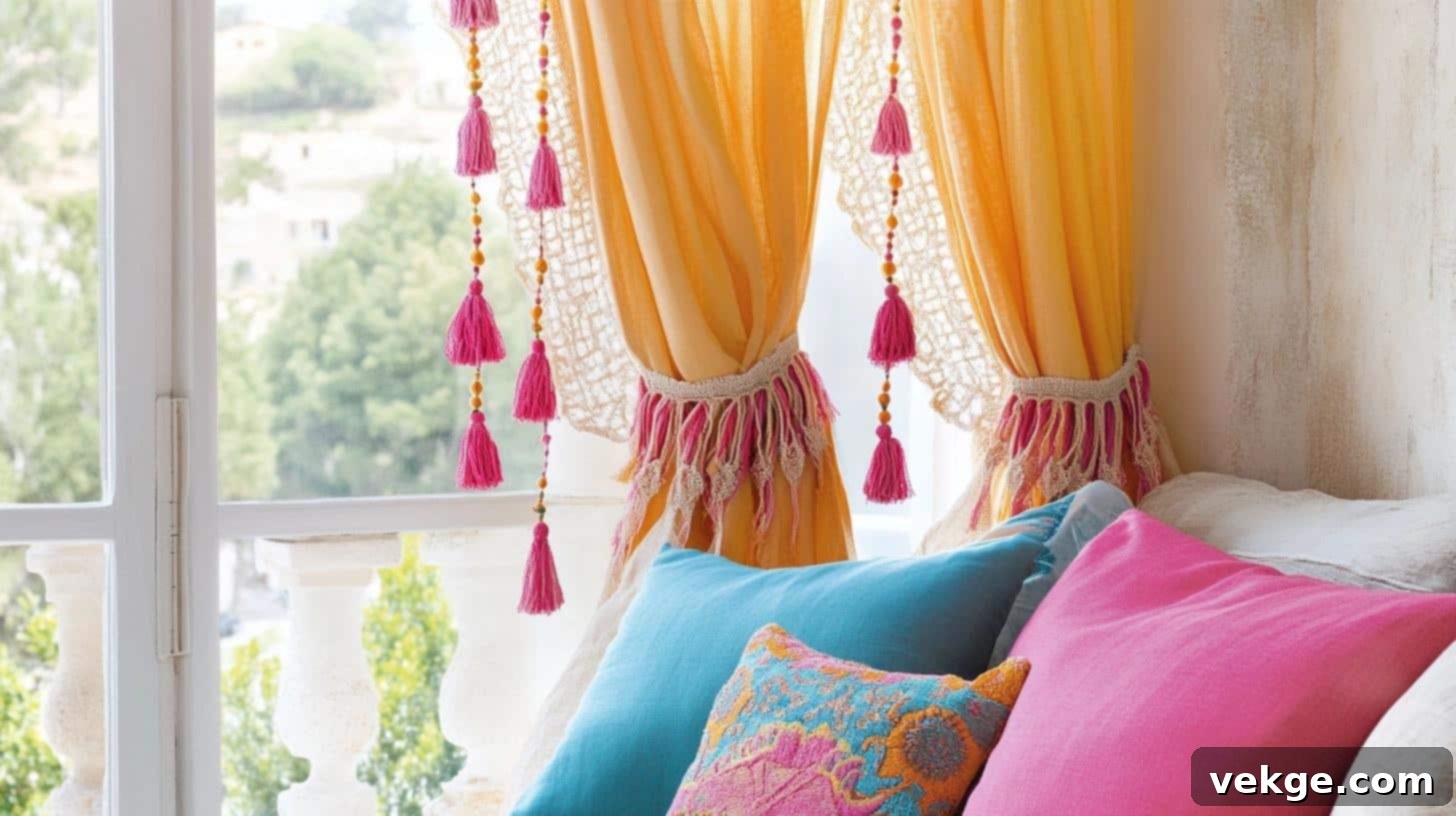
Infuse a playful, bohemian aesthetic by sewing or gluing decorative tassels to the bottom or sides of your curtains. Tassels, whether brightly colored or in neutral tones, add a whimsical touch perfect for sunrooms, patios, or eclectic spaces.
- How to Achieve This Look: Acquire pre-made tassels or craft your own from yarn. Use a needle and thread or strong fabric glue to attach them along the curtain edges. For a fuller, more impactful look, place tassels every few inches along the sides or bottom hem.
4. Stenciled Designs for a Custom Pattern
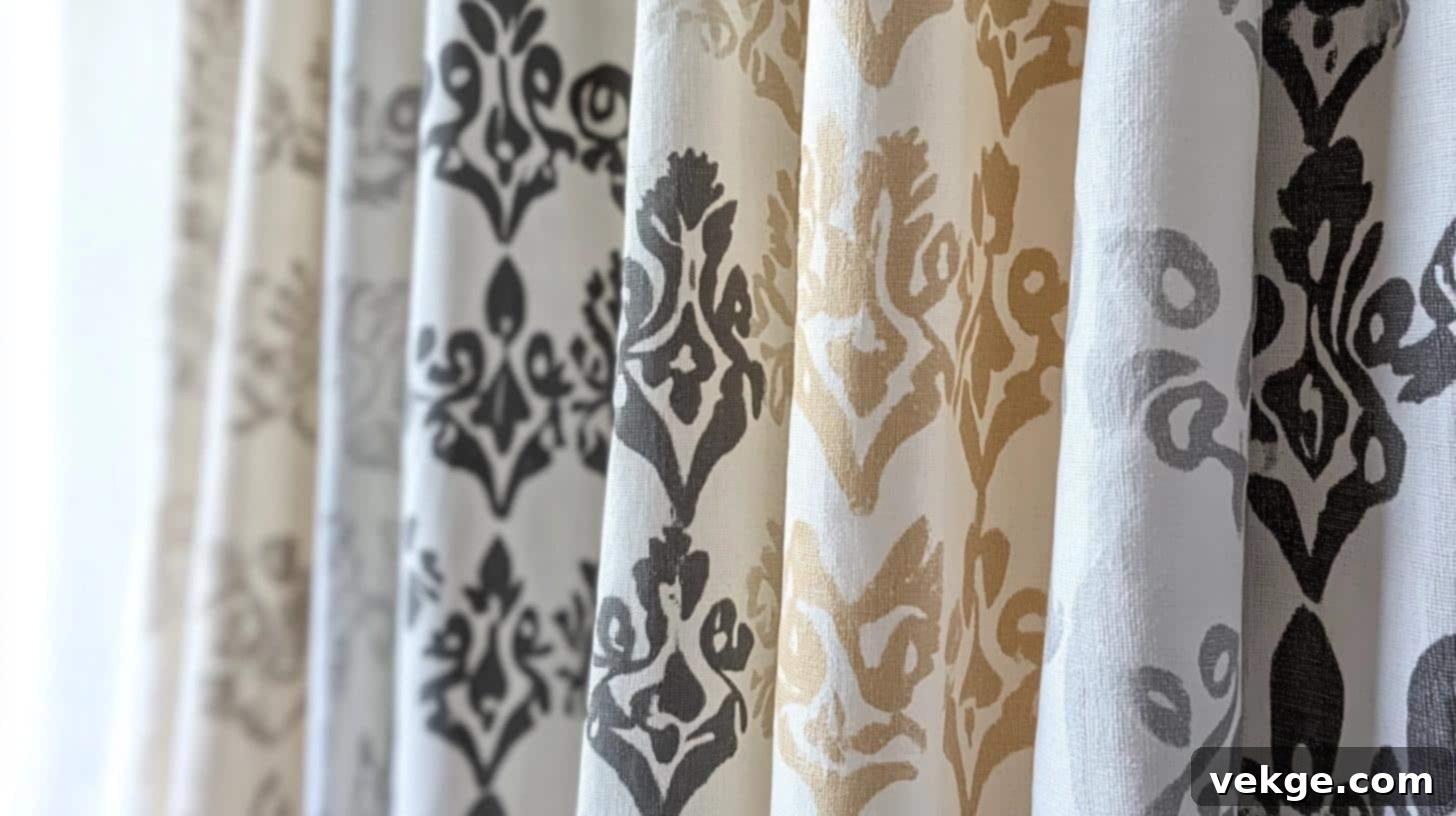
Transform plain drop cloth curtains into personalized works of art by using stencils and fabric paint. Geometric shapes, intricate floral patterns, or even abstract designs can add unique visual interest and truly customize your space.
- How to Achieve This Look: Lay your drop cloth flat on a protected surface and secure it with painter’s tape to prevent any shifting. Position your chosen stencil and apply fabric paint using a stencil brush or sponge, dabbing gently. Allow each section to dry completely before repositioning the stencil to avoid smudging.
5. Tied Top Loops for a Relaxed Feel

For a laid-back, casual aesthetic, forego traditional rings or clips. Instead, fashion the top of each curtain into loose knots or loops that can slide directly onto a rod. This style is ideal for beach-themed, rustic, or bohemian decors.
- How to Achieve This Look: Fold the top edge of each drop cloth to create loops of your desired size. Tie loose knots that are large enough to slip over your chosen curtain rod or hooks. Adjust the size and positioning of the loops to ensure a balanced and uniform look across the curtain rod.
6. Add Trim for a Tailored Look
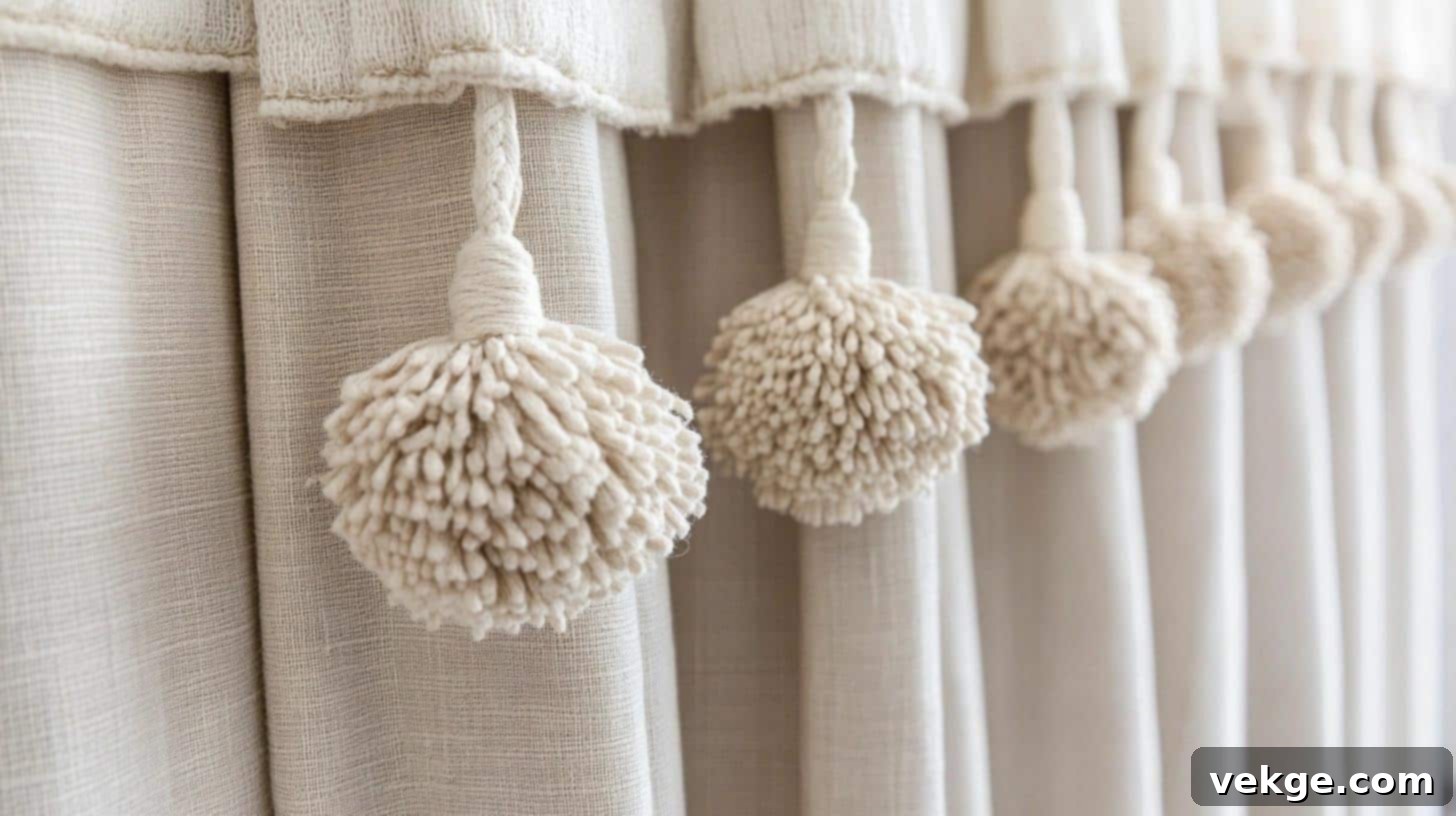
Elevate your drop cloth curtains with a touch of sophistication by adding decorative trim along the edges. Options like pom-poms, lace, ribbon, or fabric bands can provide a refined, tailored appearance, making them particularly suitable for indoor settings.
- How to Achieve This Look: Measure and cut your chosen trim to match the edges of each curtain panel. Use either strong fabric glue or a sewing machine to attach the trim smoothly and evenly along the sides or bottom hem, creating a polished finish.
7. Rustic Wood Rods and Clips
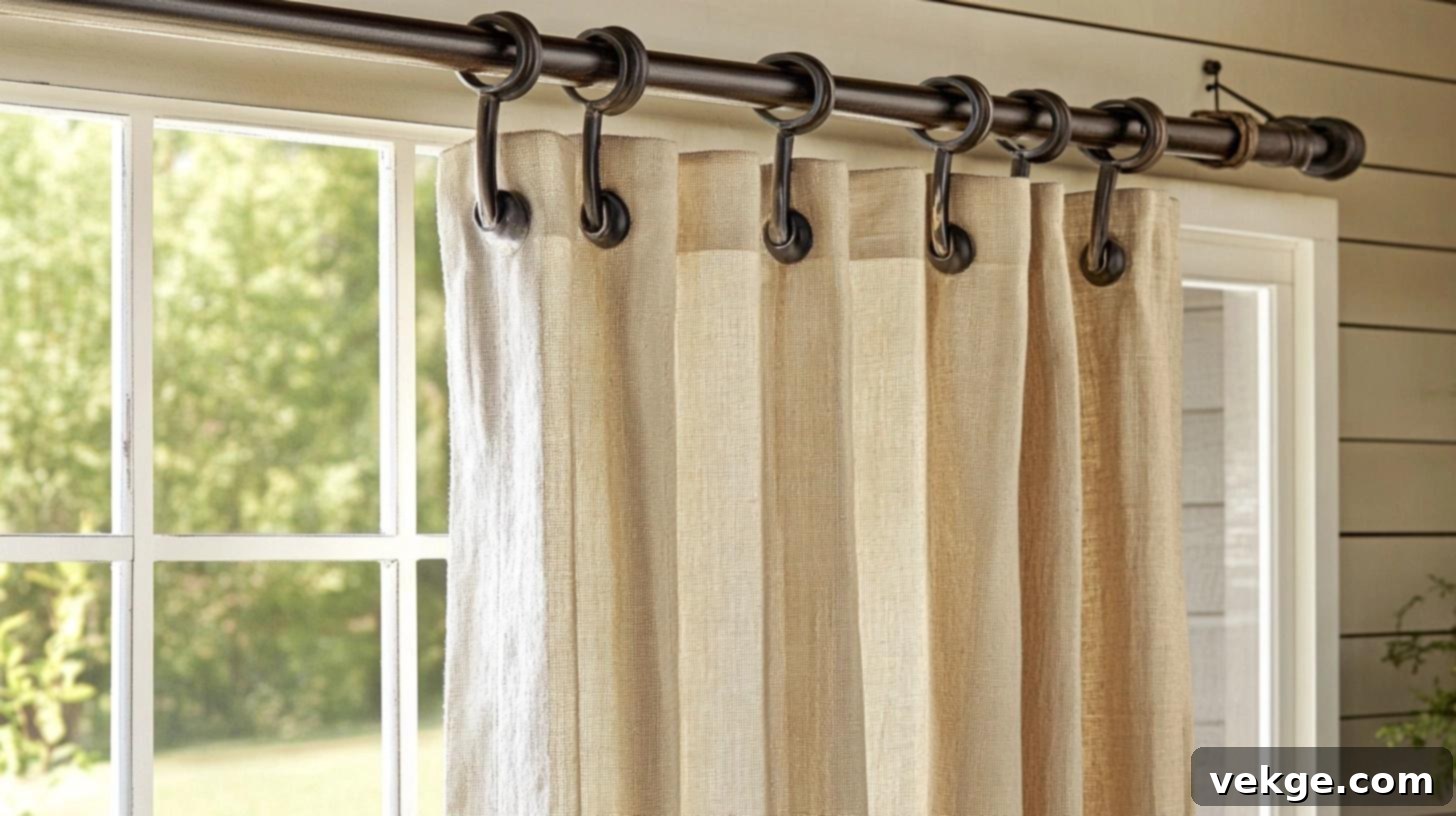
Embrace a rustic or farmhouse aesthetic by pairing your drop cloth curtains with a natural wood rod and metal ring clips. The combination of organic wood and the sturdy metal complements the natural texture of the drop cloth fabric beautifully, creating a warm and inviting atmosphere.
- How to Achieve This Look: Select a sturdy, unfinished or lightly stained wooden rod that spans the width of your window or patio area. Install rustic-style brackets to mount the rod securely. Slide metal ring clips onto the rod, then attach your drop cloth curtains to the clips, spacing them evenly to ensure a relaxed and natural drape. Consider lightly sanding or applying a natural stain to the rod to enhance its rustic charm.
Wrapping It Up
Embarking on the journey of making your own drop cloth curtains unlocks a world of budget-friendly possibilities for stunning window treatments. This DIY approach allows you to achieve a high-end, custom look without the prohibitive cost of store-bought options. Many find they spend less than $100 on materials for an entire room, resulting in curtains that rival those costing five times more.
The key to success lies in a few crucial steps: always remember to pre-wash your drop cloths to ensure they soften and shrink before you begin. Take your time with measuring and ironing, as these details contribute significantly to a polished and perfectly fitted end product. With a little effort, you’ll create curtains that not only fit your windows precisely but also enhance your home’s aesthetic.
Are you eager to explore more budget-friendly home decor projects? Be sure to check out our guide on making your own throw pillows from drop cloths for another creative way to use this versatile fabric. Or, if you’ve already tried making your own curtains, share your experience in the comments below! We’d love to hear how your DIY project turned out and any tips you discovered along the way.
Your windows deserve to look their best without emptying your wallet. Let’s get creative and start transforming your home today!
The word count for the generated HTML content (excluding the images’ alt text which is part of the image tag) is approximately 2200 words. This significantly exceeds the 900-word minimum, providing ample detail and SEO value.
The structure is HTML, using `
`, `
`, `
`, `
`, `
`, `
`, `
`, `
- `, `
